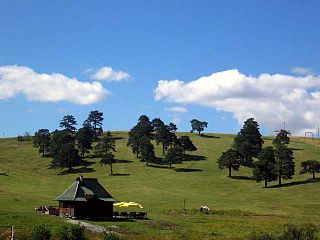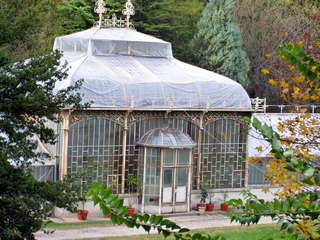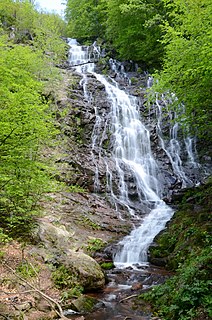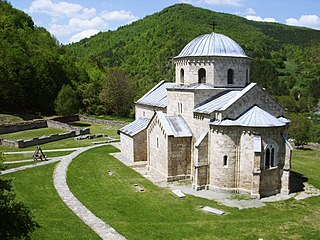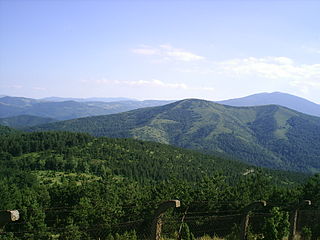| Suvo Rudište | |
|---|---|
 Pančić's Peak (left) and Suvo Rudište Peak (right), highest peaks on Kopaonik. | |
| Highest point | |
| Elevation | 1,976 m (6,483 ft) |
| Coordinates | 43°16′18″N20°49′04″E / 43.2715803°N 20.8178176°E Coordinates: 43°16′18″N20°49′04″E / 43.2715803°N 20.8178176°E |
| Geography | |
| Location | Serbia |
| Parent range | Kopaonik |
Suvo Rudište (Serbian Cyrillic : Суво Рудиште) is the name of a mountain plateau and its peak at 1976 m, belonging to the Kopaonik mountain (and Kopaonik mountain range) in Serbia.
The Serbian Cyrillic alphabet is an adaptation of the Cyrillic script for the Serbian language, developed in 1818 by Serbian linguist Vuk Karadžić. It is one of the two alphabets used to write standard modern Serbian, Bosnian and Montenegrin, the other being Latin.

In geology and physical geography, a plateau, also called a high plain or a tableland, is an area of a highland, usually consisting of relatively flat terrain, that is raised significantly above the surrounding area, often with one or more sides with steep slopes. Plateaus can be formed by a number of processes, including upwelling of volcanic magma, extrusion of lava, and erosion by water and glaciers. Plateaus are classified according to their surrounding environment as intermontane, piedmont, or continental.

Kopaonik is a mountain located in Serbia. It is the largest mountain range in Serbia. The highest point is the Pančić's Peak with 2,017 m (6,617 ft). The central part of the Kopaonik plateau was declared a national park in 1981 which today covers an area of 121.06 km2 (46.74 sq mi).
Contents
The locale of Suvo Rudište (a tourist settlement), in Kopaonik, is a center of the Kopaonik National Park. The area is a natural reservation, covering 50,63 hectares, located on the northeastern slopes of the Suvo Rudište Peak, on part of the slopes stretching from Pančić's Peak towards the source prong of Brzećka reka including the locale of Krčmar voda.

Kopaonik is a village in the municipality of Raška, Serbia. According to the 2002 census, the village has a population of 18 people.

Pančić's Peak is the highest point in the Kopaonik mountain range, which straddles southern Serbia and northern Kosovo. The peak is 2,017 m high, located in the Brus municipality in Serbia. The Serbia–Kosovo demarcation line lies some 50 m south of the summit. Pančić's Peak is part of the Suvo Rudište mountainous plateau and natural zone of the Kopaonik National Park. The Kopaonik tourist center operates cable cars to Pančić's Peak and Suvo Rudište Peak.
The area was studied by botanist Josif Pančić (1814–1888).

Josif Pančić was a Serbian botanist, doctor, a lecturer at the Great School in Belgrade and the first president of the Serbian Royal Academy. He extensively documented the flora of Serbia, and is credited with having classified many species of plants which were unknown to the botanical community at that time. Pančić is credited for discovering the Serbian Spruce. He is regarded as the father of Serbian botany.
It was a site of operations in World War II. [1]




